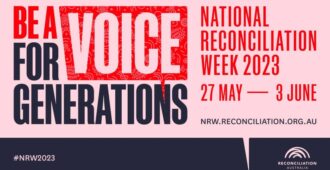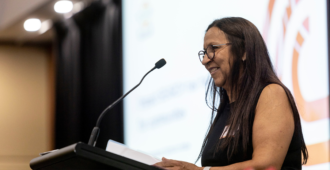
Australia risks losing its momentum on tobacco control after decades of policy successes in the area, cancer experts warn, with government investment in mass media campaigns falling to about one-fifth of the amount spent a decade ago, even as evidence on the harms of smoking has risen.
The annual overall cost to Australia caused by smoking was recalculated last year to be nearly $137 billion, more than four times the previous estimate reported in 2004. However, the expert authors of a perspective published today in a special themed issue of Public Health Research & Practice say that spending on anti-smoking media campaigns by the Australian, NSW and Victorian governments fell from about $36 million to $7.1 million between 2010-11 and 2017-18, despite this being among the most cost-effective reduction strategies.
Australia’s national adult smoking rate is now 16% for men and 12% for women, down from 58% and 28% for men and women respectively more than 40 years ago. Daily smoking in Australians aged over 14 is at an all-time low of 11.5%. But evidence about the harms of smoking has continued to mount, with smoking now shown to cause 15 fatal cancer types besides lung cancer, and about 11.5% of heart disease deaths as well as accounting for nearly 10% of Australia’s total disease burden – with smoking the underlying cause of premature death in two in three long-term smokers.
Authors Paul Grogan, of the Cancer Council, and Professor Emily Banks, of the Australian National University’s National Centre for Epidemiology and Population Health and the Sax Institute, write in their perspective that the “risk of smoking causing as many as 1.6 million preventable deaths in Australia (two-thirds of current smokers) should be enough to galvanise a re-energised, whole-of-government response to tobacco control”.
The two authors welcome Federal Health Minister Greg Hunt’s recent commitment to reduce the national smoking rate to 10% by 2025, and call for the fourth National Tobacco Strategy now in development to “form a blueprint for re-energising tobacco control”. “Tobacco control in Australia is a great success story but it is far from over,” they write.
The perspective is one of nine papers published today as part of a special issue of the journal produced in partnership with Cancer Council Australia. Other papers in the issue identify “compelling opportunities” to reduce smoking rates further:
- One paper calls for a national strategy for treating tobacco dependence in Australia, which would see evidence-based cessation approaches actively promoted to individuals. The authors, from Quit Victoria and Deakin University, say “treatment is fragmented and resourcing is woefully inadequate given the scale of mortality and morbidity”.
- On tobacco availability, a paper by experts from Cancer Council NSW, the University of Sydney and Western Sydney University says additional curbs on the currently widespread availability of tobacco are a “critical next step” in the fight against tobacco use, after finding that 90% of adults surveyed in in NSW said cigarettes were easily accessible at retailers near their homes.
- Former Health Minister Dr Michael Wooldridge says in an interview in the journal that despite many recent policy successes, “there’s not enough happening” to maintain downward pressure on smoking. Dr Wooldridge says that action on tobacco should only be eased “when adult smoking rates are 2% or lower”.
“These measures should be underpinned by the most effective form of public education – hard-hitting mass media campaigns that discourage smoking and help pull all the pieces of a comprehensive approach together in a powerful message,” Mr Grogan and Professor Banks write.
In an editorial, Becky Freeman, Anita Dessaix and Matthew Peters say fears that chronic disease prevention will be put aside during the COVID19 pandemic further fuel the need to renew investment in tobacco control.
“The COVID19 pandemic has also seen record numbers of UK citizens quit smoking in light of the link between smoking and likelihood of suffering from severe coronavirus illness. Public health concerns need not compete with each other, both the COVID19 pandemic and tobacco use can be concurrently and effectively addressed.”
Click here to view the full contents of the latest issue of Public Health Research and Practice.
Media enquiries
Hugo Wilcken, Media Manager, Sax Institute
M: 0451 122 146 E: hugo.wilcken@saxinstitute.org.au
Nyssa Skilton, PHRP Editor
M: 0408 331 262 E: nyssa.skilton@saxinstitute.org.au
Public Health Research & Practice is an open-access, peer-reviewed, Medline-listed quarterly online journal published by the Sax Institute. Click here to subscribe for free.
About the Sax Institute
The Sax Institute is an independent, not-for-profit organisation that improves health and wellbeing by driving better use of evidence in policies, programs and services.




